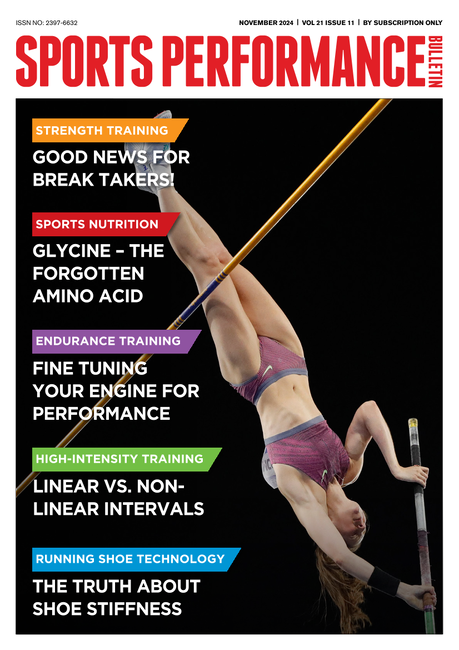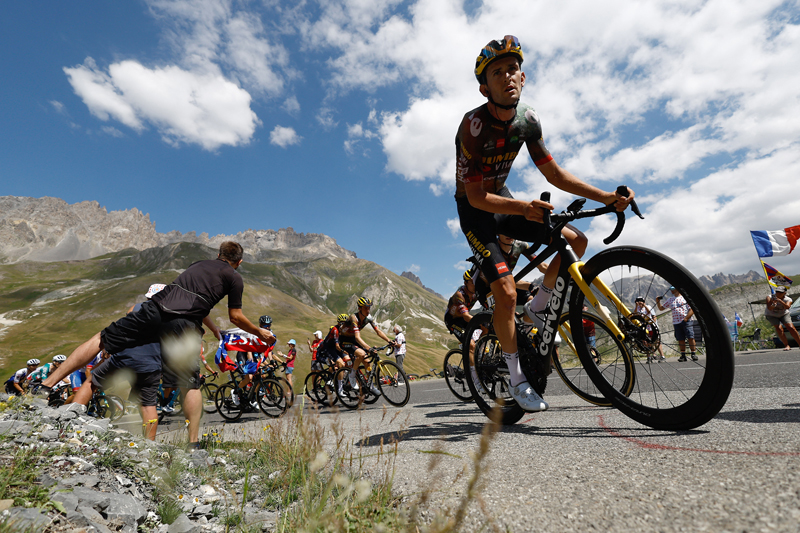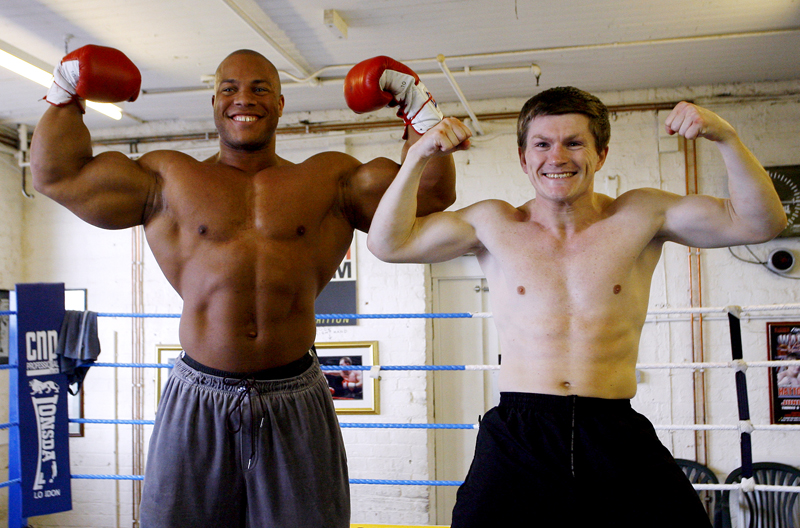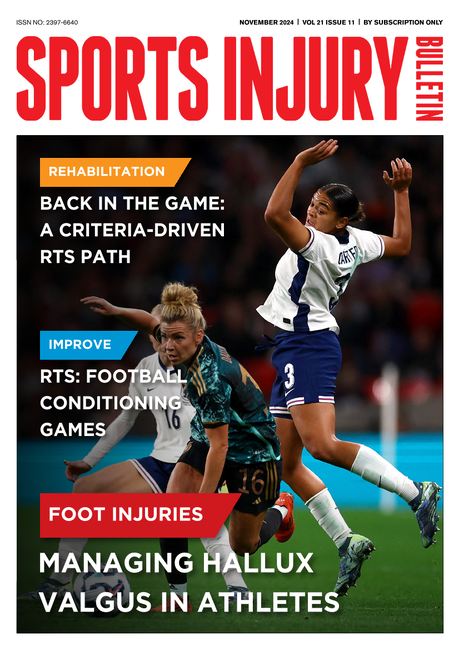You are viewing 1 of your 1 free articles. For unlimited access take a risk-free trial
Aerobic training
Do the young respond more effectively to aerobic training? Don't you believe it. We hear it all the time: old people can't respond to training as young people do.
After all, muscles somehow lose their ability to adapt. In fact, after the age of 60, they're struggling just to stay alive and keep their connections with the nervous system intact.The general lack of fitness in the elderly population seems to support these assertions, but there's just one problem: it's all wrong. Athletes over the age of 65 can respond to training just as effectively as 30-year-old whippersnappers. There's just no excuse for sitting by the fireside anymore!
Older people's responsiveness to training was determined recently in a study carried out at the University of Florida. There 10 sedentary, old (aged 67) males and females and 11 sedentary, young (aged 30) males and females completed a 16-week exercise programme.
All subjects worked out three times per week on a treadmill and/or stair-climbing machine. Over the 16-week period, workout duration increased from 20 to 40 minutes, and training intensity advanced from about 60 to 80 per cent of maximal heart rate.
At the end of 16 weeks, the young athletes had increased their maximal aerobic capacity (VO2max) by 12 per cent. The oldies? You guessed it: they had bolstered VO2max by 14 per cent (the difference wasn't statistically significant).
Since the old people improved just as much as the youngsters, the researchers wisely concluded that when the training stimulus is similar, older adults can increase their aerobic capacities to the same extent as young people.
( 'Aerobic Exercise Training Responses in Young and Elderly Men and Women, N Medicine and Science in Sports and Exercise, vol. 25(5), p. 579, 1993)
And here's a group of elderly hour a day exercisers who are aerobically 30 years younger
Maximal heart rate, VO2max, muscular strength and respiratory capacity all tend to decline as a function of age, causing some exercise scientists to speculate that individuals over the age of 70 may not be able to improve their exercise capacities very much in response to training. However, recent research carried out at Appalachian State University in North Carolina suggests that 70-plus individuals can still achieve dramatic improvements in aerobic capacity, provided their training intensity is high enough.
At Appalachian State, 30 sedentary elderly women (average age 74) were divided into two groups. One group began a 12-week walking programme consisting of five 30- to 40-minute walks per week, each at an intensity of about 60% V02max. Average heart rate during the walks was around 120 beats per minute (about 78 per cent of maximal heart rate). The second group engaged in 'mild musculoskeletal exercises' consisting of calisthenics and stretching routines designed to improve range of motion and flexibility. Heart rates averaged only 86 beats per minute during this second group's training sessions - just seven beats above resting heart rates.
After 12 weeks, VO2max increased by almost 13 per cent for the walkers, versus only 2 per cent for the calisthenics participants. In addition, gains in V02max weren't limited by age: 85-year-old walkers achieved the same gains in VO2max as their more youthful (67-year-old) counterparts.
The bottom line? It's never too late. Even 85-year-olds can dramatically boost their aerobic capacities. Physical capacities do tend to go downhill as people age, but's it's always possible to reverse the process through regular exercise. In fact, for people over the age of 65, as the foregoing report also shows, a 12- to 16-week programme of aerobic exercise can produce 10- to 20-per cent improvements in aerobic capacity, as long as heart rates go above 75 per cent of maximal during some of the workouts.
The North Carolina researchers uncovered one other pleasing result. When they tested a different group of 12 highly conditioned older women (average age 73) who exercised about one hour a day, they found that these fit women had aerobic capacities comparable to women 30 years younger!
Finally, let's dispel a few other myths about getting older
Unfortunately, misconceptions about exercise and the ageing process are commonplace. One of the most prevalent - but inaccurate - beliefs is that once individuals reach the age of 20, each passing year AUTOMATICALLY knocks another beat per minute from maximal heart rate (as in the '220-minus-age' method of reckoning your uppermost pulse).If this were always true, it would be a very bad thing for exercisers, because the heart-rate decline would make it more difficult for the heart to send lots of blood to the muscles during high-intensity exercise. As a result, older athletes would have to slow down.
Fortunately, new studies suggests that the steady fall-off in maximal heart rate is far from assured. In fact, research carried out at Ball State University (described in the first article in this special issue) determined that highly trained runners' maximal heart rates did not change significantly between the ages of 26 to 48. Investigations carried out by Jack Daniels, Ph.D. at the State University of Cortland in New York also found that maximal heart rate was well maintained in individuals who continued training vigorously into their late 40s.
A second myth is that aerobic capacity inevitably begins to decline once athletes reach the age of 35. The reality is that the well-trained Ball State runners had no significant loss of V02max between the ages of 26 and 48. Current thinking suggests that VO2max can be completely maintained after the age of 35 - if athletes continue to carry out intense workouts.
It Is true that VO2max must eventually fall. However, the 10-15 per cent loss in aerobic capacity per decade that we're used to thinking about is actually caused by a mixture of effects, including ageing and a drop-off in training quality. The true performance-diminishing effect of ageing is probably just 2 to 5 per cent per decade after the age of 40-45 or so, and it may be even less in some athletes.
Another popular misconception is that fat cells expand their girth and that body weight climbs after the fourth decade of life, but research indicates that this is mainly true to the extent to which one becomes inactive. The Ball State athletes actually remained at the same weight between the ages of 26 and 48, and some of Daniels's well-trained runners weighed less at the age of 49 than they had at 24!
Perhaps the most beloved misbelief is that muscle cells begin to shrink and deteriorate as athletes reach middle age. However, the cross-sectional areas of Type I muscle cells (the ones primarily responsible for endurance performance) actually advanced by 25 per cent between the ages of 26 and 48 in the athletes involved in the Ball State study. It's also fashionable to believe that the number of oxygen-carrying blood vessels (capillaries) around athletes' muscles declines as they get older. The reality suggested by recent studies is that both young and elderly (78-81-year-old) individuals have exactly the same density of capillaries - about 1.5 capillaries per muscle cell.
Newsletter Sign Up
Testimonials
Dr. Alexandra Fandetti-Robin, Back & Body Chiropractic
Elspeth Cowell MSCh DpodM SRCh HCPC reg
William Hunter, Nuffield Health
Newsletter Sign Up
Coaches Testimonials
Dr. Alexandra Fandetti-Robin, Back & Body Chiropractic
Elspeth Cowell MSCh DpodM SRCh HCPC reg
William Hunter, Nuffield Health
Keep up with latest sports science research and apply it to maximize performance
Today you have the chance to join a group of athletes, and sports coaches/trainers who all have something special in common...
They use the latest research to improve performance for themselves and their clients - both athletes and sports teams - with help from global specialists in the fields of sports science, sports medicine and sports psychology.
They do this by reading Sports Performance Bulletin, an easy-to-digest but serious-minded journal dedicated to high performance sports. SPB offers a wealth of information and insight into the latest research, in an easily-accessible and understood format, along with a wealth of practical recommendations.
*includes 3 coaching manuals
Get Inspired
All the latest techniques and approaches
Sports Performance Bulletin helps dedicated endurance athletes improve their performance. Sense-checking the latest sports science research, and sourcing evidence and case studies to support findings, Sports Performance Bulletin turns proven insights into easily digestible practical advice. Supporting athletes, coaches and professionals who wish to ensure their guidance and programmes are kept right up to date and based on credible science.









